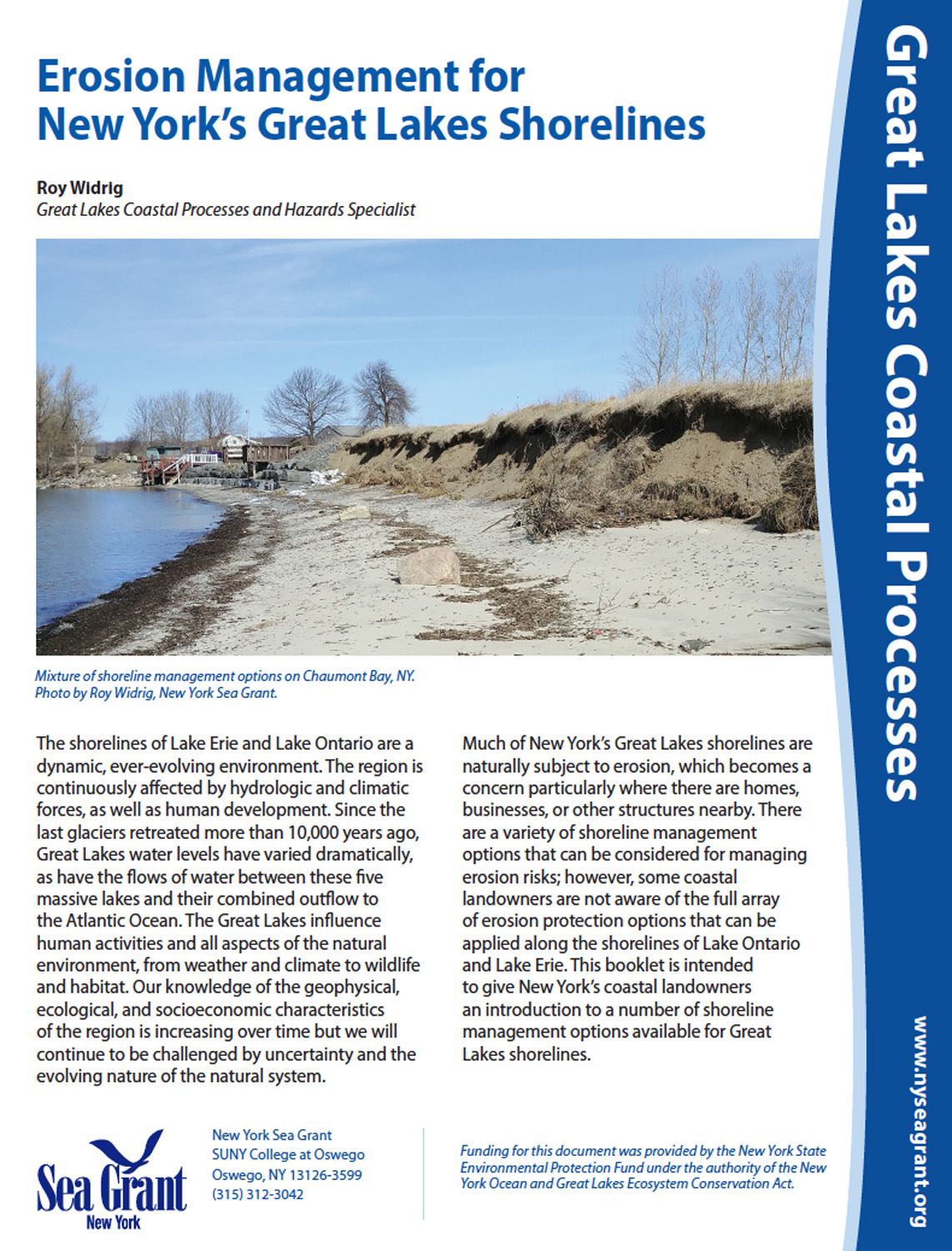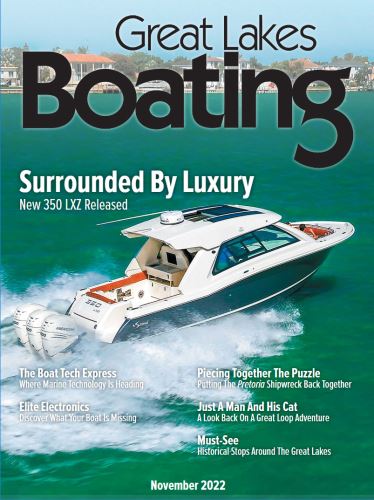
An Erosion Management for New York's Great Lakes Shoreline guide is now available from New York Sea Grant. The 16-page guide can be downloaded for free online at http://bit.ly/2IoF1F4 or requested from New York Sea Grant at 315-312-3042.
"Erosion is a natural process and shorelines in the Great Lakes region are constantly changing shape. Developing an understanding of the natural processes at work and identifying the level of protection needed for specific sites are important considerations in planning a project," says guide author Roy Widrig, a Coastal Hazards and Processes Specialist with New York Sea Grant, Oswego, N.Y.
Readers will learn about managing shoreline properties for better drainage and bluff stabilization, nature-based erosion management features such as coir logs and sills, and traditional hard or gray structures.
The guide outlines the different types of each shoreline management option and discusses the design considerations, limitations, and effects on coastal processes and delicate coastal ecosystems.
Photos in the illustrated guide include shoreline management options seen along New York's Great Lakes shoreline along Lake Ontario at:
. Irondequoit Bay in Monroe County
. Sterling in Cayuga County
. Chimney Bluffs and Sodus Bay in Wayne County
. Selkirk Shores State Park and Sandy Island Beach in Oswego County, and at
. Westcott Beach State Park and Chaumont Bay in Jefferson County.
To learn more about New York Sea Grant, a National Oceanic and Atmospheric Administration cooperative program at Cornell University and the State University of New York, visit www.nyseagrant.org.

